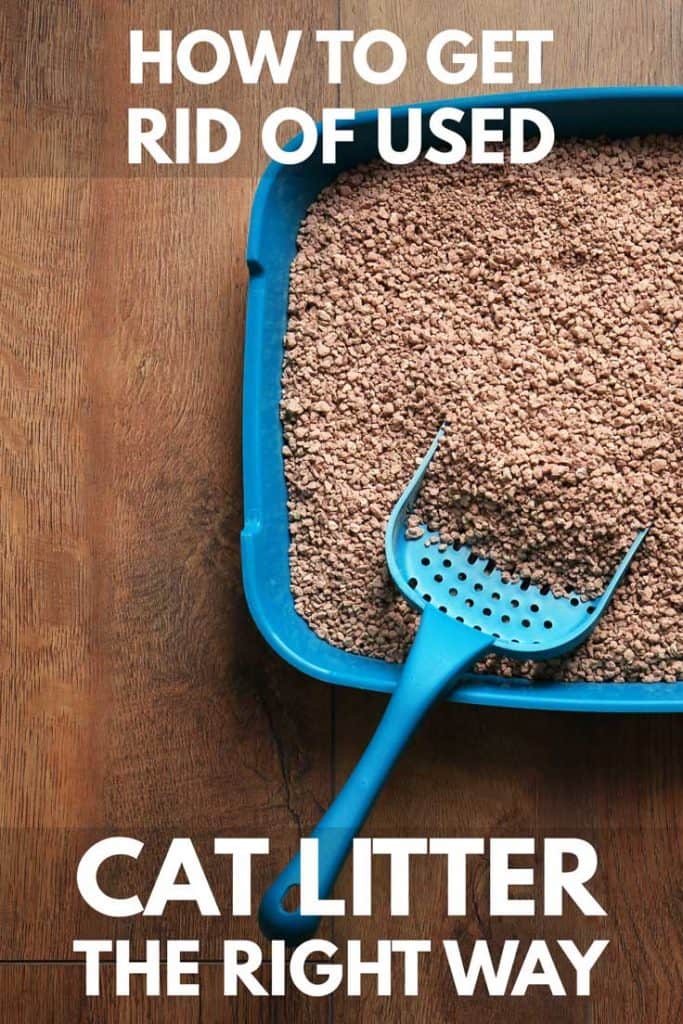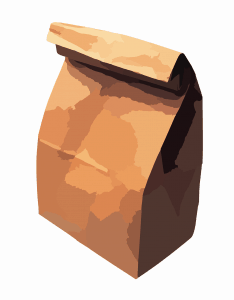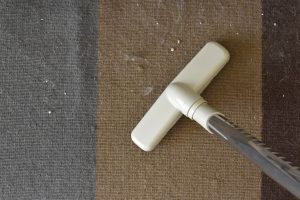Are you scratching your head over the proper way to dispose of used cat litter? The whole process might seem as simple as bagging it and binning it, but there's more to it. Like most pet-related responsibilities, there's a 'right' way and a 'wrong' way to do it.
In this article, we're going to get into the nitty-gritty details of disposing of cat litter the right way. We'll talk about why this matters, the risks of doing it wrong, and, most importantly, how to do it correctly to maintain a healthy and happy environment for both you and your furry friend.
This is crucial information for all cat owners, especially if you're keen on preserving the longevity of your furniture, the cleanliness of your living space, and the well-being of your garden (should you have one).
Read on to discover how you can turn this seemingly mundane task into an environmentally responsible act.

The Proper Way to Dispose of Used Cat Litter
Disposing of most commercially available litter is pretty straightforward. It involves placing the used litter into a sturdy trash bag, securing it tightly, and sending it off for a landfill adventure.
When it comes to biodegradable varieties, such as corn or wheat-based litter, things get a little more interesting. You might consider returning the discarded material back to nature by scattering it in a non-edible flower garden. A word of caution, though - litter has no place in your veggie patch or fruit garden.
You'll come across a few types of litter labeled as 'flushable'. Even in such cases, only minimal quantities should venture down your toilet's waterways.
The root of all these specificities lies in the potential for contamination, particularly from toxoplasmosis - a parasitic disease that can hitch a ride on cat feces. It sounds worrisome, doesn't it? But don't panic. We're here to guide you through the ins and outs of safe cat litter disposal, from earth-friendly techniques to the rationale behind such precautions.
How to properly dispose of cat litter
It's essential to get rid of cat litter the right way because it's best for you and the environment! Scoop the kitty litter into a bag and tie the bag tightly. Then, insert the bag with the used kitty litter into another bag (double-bagged), tieing both bags to prevent leaking. Then properly store the trash bag until garbage pick-up to ensure wild animals don't tear open the bag.
You might be surprised to find out that the best way to dispose of commercial cat litter is in the landfill. That helps prevent the spread of toxoplasmosis. It can also prevent contamination from chemicals, such as silica dust.
Throwing litter in the trash may seem counterintuitive since we know landfills are a risk to the environment, and we're often told to reduce our carbon footprint. But the possibility of polluting our waterways or contaminating our gardens isn't worth the risk. There are certain situations where environmentally-friendly ways to properly dispose of cat litter do exist. Keep reading to find out which circumstances.
Why it is essential to get rid of cat litter the right way
It is so important to get rid of cat litter the proper way. If you don't, you risk spreading possible infection or contamination.
Cat’s can carry a disease called toxoplasmosis, which is caused by a parasitic infection. Cat’s can catch this disease through the ingestion of raw meat, or eating other animals such as birds or mice. It is most often spread through contaminated cat feces, being transferred from feline to feline or feline to human.
In most cases, this is harmless to humans and results in flu-like symptoms or no symptoms at all. However, in pregnant women or those with immune deficiencies, this infection can wreak havoc on their symptoms, causing life-threatening outcomes. It’s because of this that not only is it recommended to ensure those at risk not only avoid handling contaminated cat litter but ensure that the litter does not come in contact with their source of food, for instance, composting of litter in an edible garden.
Read more: Should you clean the litter box if you're pregnant?
In addition to possibly spreading an infection to humans, this disease can be spread to our oceanic friends as well. Toxoplasmosis can be very harmful to sea otters, even deadly. It's because of this that its important contaminated feces does not enter our waterways.
Mistakes people make when disposing of cat litter
We've explained the right way to dispose of cat litter, but we'll also fill you in on the wrong way. When disposing of cat litter, it's best to avoid making the following mistakes.
- Do not scoop cat litter into your garbage or bathroom trash can and let it sit. There’s the possibility of contaminated cat feces traces and dust from the cat litter entering the air every time someone opens the garbage can.
- Dig deeper into the ingredients (not literally) and do your research. Just because a cat litter states it's environmentally friendly, this doesn't mean it's biodegradable. Ensure it's safe to compost before doing so.
- Avoid composting your cat litter in an edible garden. Even if you remove feces from the litter before disposing of, trace particles of toxoplasmosis could remain. Toxoplasmosis can survive in the soil for roughly two years. Even beyond that, the ammonia in cat urine will likely burn your plants.
- Do not dump your cat litter outside. While it may be convenient, it's terrible for the environment. Other animals could track through the used cat litter, or ingest it, causing potential illness and infection.
Environmentally-friendly methods of disposing of cat litter
If you have determined that your cat litter is, in fact, biodegradable, such as chicken feed, corn, or wheat, you can get rid of used cat litter in an environmentally-friendly way.
Compost

If you choose to go this route, you'll need a compost bin, and luckily you have options. You can purchase a compost bin at your local hardware store, or you can buy one online. You can also make a compost bin if you'd prefer and if you're handy! You'll need a container that's large enough to hold the materials plus extra space to turn it.
Ensure you do not discard of non-biodegradable items or litters in the compost bin, such as clumping clay litters and silica litters.
Forgo the plastic bag

Instead of a plastic bag, use a brown bag! They’ll disintegrate very quickly in a landfill and are much better for the environment. If you’re planning to compost, you should never use a plastic bag as they are not biodegradable.
You can also purchase biodegradable bags that are designed specifically for this purpose. They are meant to securely hold cat litter and trap odors inside of the bag until you can dispose of it.
Bury it
We recommend you obtain permission before digging holes in your yard. Ensure the holes aren't near any waterway runoffs and make sure the cat litter is biodegradable.
You'll need to dig a hole somewhere out of the way on your property under a porch would work or off to the side where it won't be dug up. Fill the hole with the used kitty litter and cover it up! It's best if it remains undisturbed for two years.
Can I burn cat litter?

If you live on a farm or in a rural area, you might be thinking of having a bonfire and burning the used cat litter and the waste along with it.
Clay cat litter will not burn and, rather than denigrate, will still be in a clump at the bottom of a burn barrel. If you're using an eco-friendly litter, this may be a possibility. However, any toxins could be airborne, therefore very harmful to your health.
Can I flush cat litter down the toilet?
You should never flush cat litter down the toilet, even if the packaging states that it is flushable. While your cat is likely an indoor cat and it is unlikely they’ll come in contact with toxoplasmosis, the sheer possibility means that you could put our waterways at risk by flushing cat feces or contaminated cat litter.
Toxoplasmosis is very dangerous for marine life, in particular, sea otters. Although we treat our sewage and drainage systems with chlorine, this does not kill off the toxoplasmosis. This parasitic disease can infect birds, otters, and shellfish, causing disastrous effects to our ecological system.
Not only is the risk of contamination high, but there is also the possibility of the cat litter expanding and the clumps clogging the pipes and septic system.
Uses for used cat litter
Some readers have found creative ways to repurpose used cat litter. It's important to note; you should be 100% sure your cat in no way was exposed to toxoplasmosis, and there is no risk of infection for anyone who could come in contact with the used litter. If you are unsure, it's best to dispose of the cat litter using the methods mentioned above.
De-icer
If you live on a large property or are thrifty and hoping to save money, you might opt to use cat litter on icy sidewalks or walkways.
Ensure that it has been sifted to remove any excrement and sprinkle it liberally to help break up ice and reduce any slipping. When the ice melts, you may need to sweep up the cat litter for disposal.
Motor oil absorber
If you work in a garage or tend to work on vehicles frequently at home, you may find cat litter is an excellent absorber. If there is an oil spill in your shop or on your driveway, liberally sprinkle cat litter on the spill.
Once absorbed, sweet it into a trash bag and secure it to avoid spills. Because motor oil is a harsh chemical, your city or town may have special requirements for disposal. Be sure to do your research before throwing it out.
And if you're just wondering about what else you can do with clean cat litter, try this guide:
33 Ways to Use Cat Litter (Other than in Kitty's Box)
In Summary: The Finer Points of Feline Waste Management
Wrapping up our deep dive into cat litter disposal, we affirm the importance of mindful practices for both human health and environmental well-being. From selecting the appropriate disposal method to recognizing the limitations and dangers of improper handling, the details matter.
Whether you're using commercial or biodegradable litter, remember to take the necessary precautions to prevent environmental contamination, specifically by toxoplasmosis. Creative and environmentally friendly uses of used cat litter can also be considered, provided you're confident about the absence of any infection risk.
Above all, make sure to follow local regulations regarding waste disposal, especially for materials potentially hazardous like motor oil. Let's continue to strive for practices that preserve our environment and promote health and safety for all, humans and feline companions alike.


![cat examines kitty litter box with eco-friendly silicate litter - Can You Wash and Reuse Crystal Cat Litter? [Answered]](https://litter-boxes.com/wp-content/uploads/2023/08/cat-examines-kitty-litter-box-with-eco-friendly-silicate-litter-300x200.jpg)
